Have you ever wondered how long it takes to replace a water pump in your vehicle? We have researched the average time for a DIY water pump replacement and will share our findings.
For an average DIYer, the time it takes to replace a vehicle’s water pump is between 2 to 4 hours. It may take less time if performed by an experienced mechanic.
Replacing your vehicle's water pump is a fairly straightforward process. In fact, we're going to show you every step in the process. We'll also cover questions related to our topic. Who knows if you've always had these questions at the back of your mind all along and you might find the answers here so read on!
When Should You Replace Your Car's Water Pump? (Telltale Signs)
Many of us have wondered when to replace the water pump on our cars, and this lack of knowledge can be costly. Scrupulous mechanics are out there like bees at a honey pot, and they will take advantage of you if you don’t know what you are doing.
They will not only charge you for unnecessary repairs, but they will also replace a part that should not have been replaced in the first place!
So, here are some telltale signs that you should know so you'll have an idea when to replace your vehicle's water pump:
Engine overheating
A bad water pump can cause a car to overheat because it prevents the coolant from circulating through the engine. Because there's no coolant circulating through the radiator, there's no way for your car's cooling system to dissipate heat. This results in the engine getting hotter and hotter.
Coolant leaking
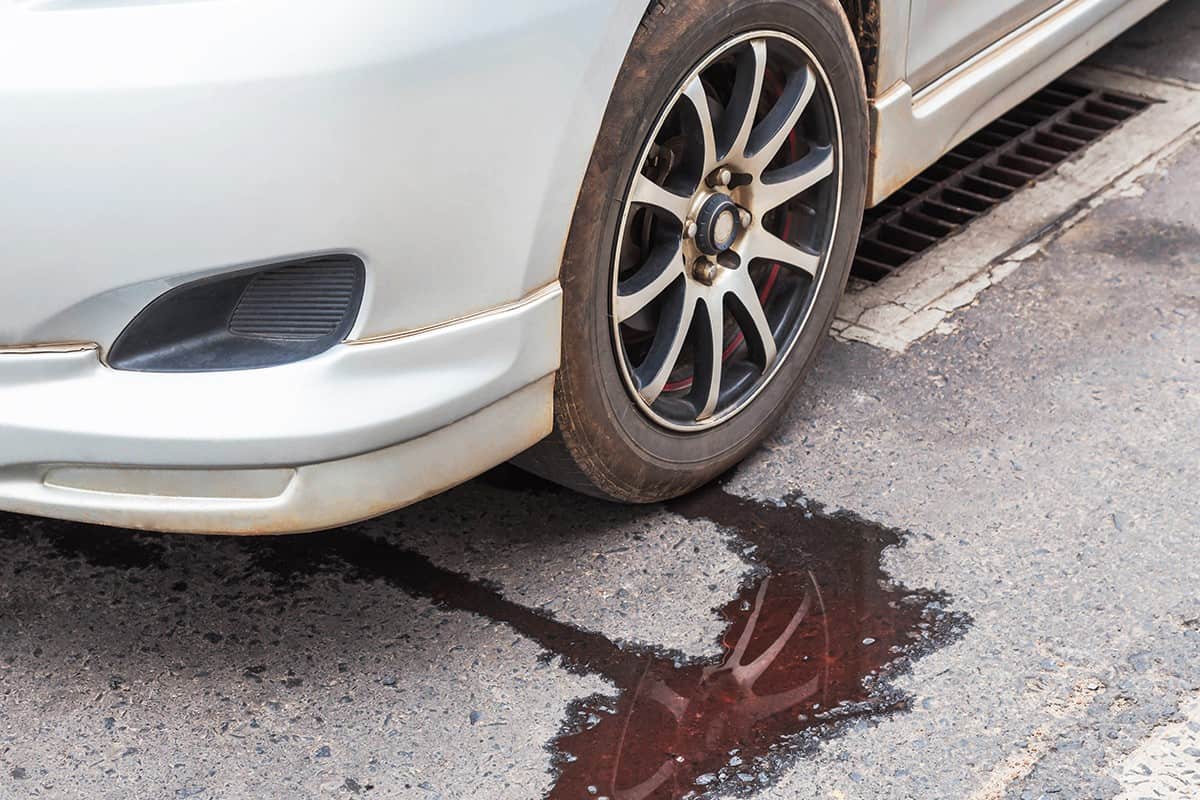
The car engine doesn’t just provide power for the vehicle. It also provides a closed-loop cooling system that circulates coolant through the engine block, into the radiator, and then back to the block.
The system requires a minimum amount of coolant, and when that is too low, the cooling system won’t work properly. To ensure the engine’s continued operation, you must check your car's coolant level every once in a while.
So, a leak in the cooling system can mean a quick trip to the mechanic or the total breakdown of a vehicle. You'll know if it's a water pump issue if the leak is found in the front or center of your car.
Strange noises
If you’ve ever wondered what’s causing your car to make whining noises while driving, you’re not alone. The whining noise in the front part of your car's engine is usually caused by worn water pump assembly bearings.
Water pumps don't really get as much attention as other components of the car do, and will only get one if they break down. This is because water pumps are self-lubricating, meaning that they don’t require scheduled lubrication to maintain them. The bearings wearing down over time is inevitable, and no amount of lubrication will keep it from happening.
Steam in the radiator
Ideally, your car's coolant is not supposed to vaporize and escape into the atmosphere. This is why your car's engine has a normal operating temperature to prevent this from happening.
If your car's engine goes beyond the normal operating temperature, then it will cause the coolant to boil. This is most likely to happen if your head gasket is blown.
Rust and corrosion due to old age
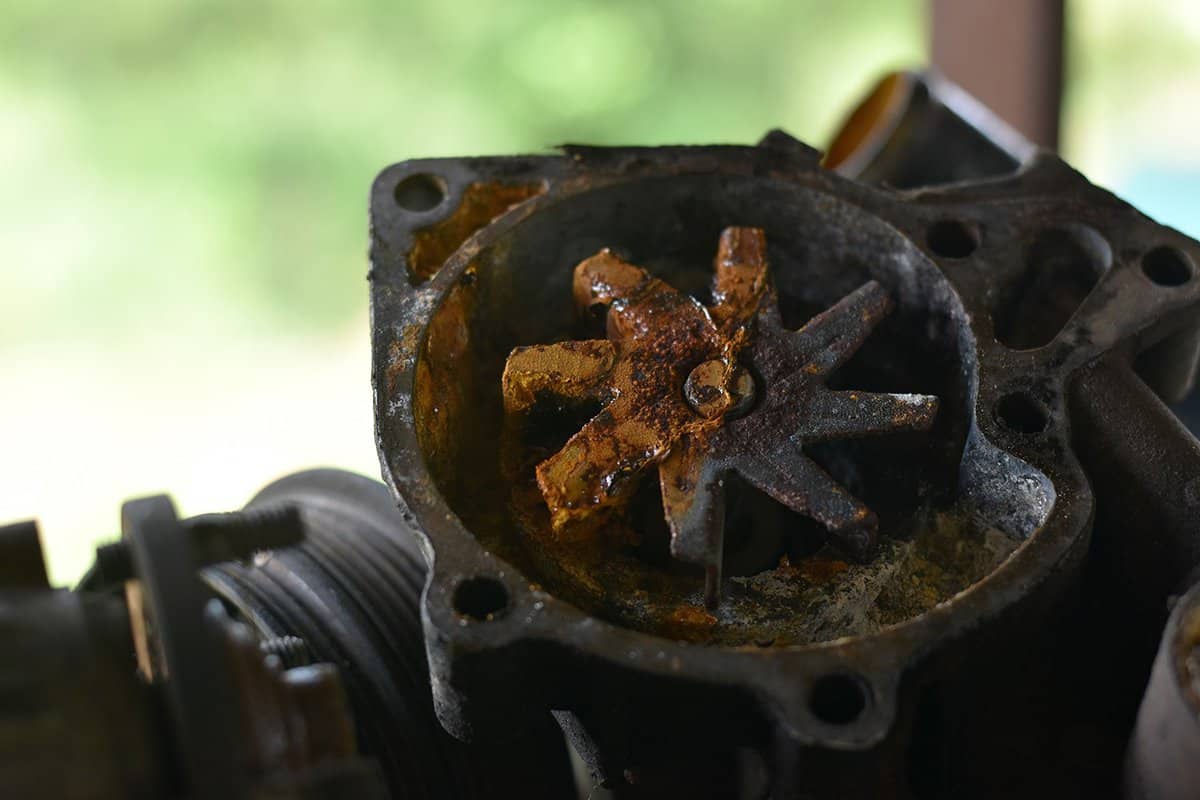
Every car component will eventually fail due to old age, and your car's water pump is not an exception. In fact, you can even expedite its demise if you keep on using the wrong coolant! Oxidation happens when water and air combine.
Typically, a car coolant is made up of 50% water and 50% additives. When a coolant circulates in a cooling system without an overflow tank, there is a higher chance for air to be introduced into the car's cooling system which causes the coolant to contract and rust to develop.
Can I DIY a Water Pump Replacement?
Replacing the water pump is not a simple task and requires specialized training. However, this should not stop you from replacing the water pump yourself.
Although it's not your car manufacturer's intention to design water pumps so that they can be removed and replaced easily, you can actually do the job yourself if you have the right tools.
You just need to understand first the specific design and components of the water pump like how it fits the vehicle and where to locate its bolts. You'll also need a replacement water pump part that fits the vehicle you want to replace it with. And don't forget the gasket!
You will save a lot of money by doing the work yourself as well. If you have never done any mechanical work before, you should be prepared for a steep learning curve.
Step-by-Step Guide to Replacing a Water Pump
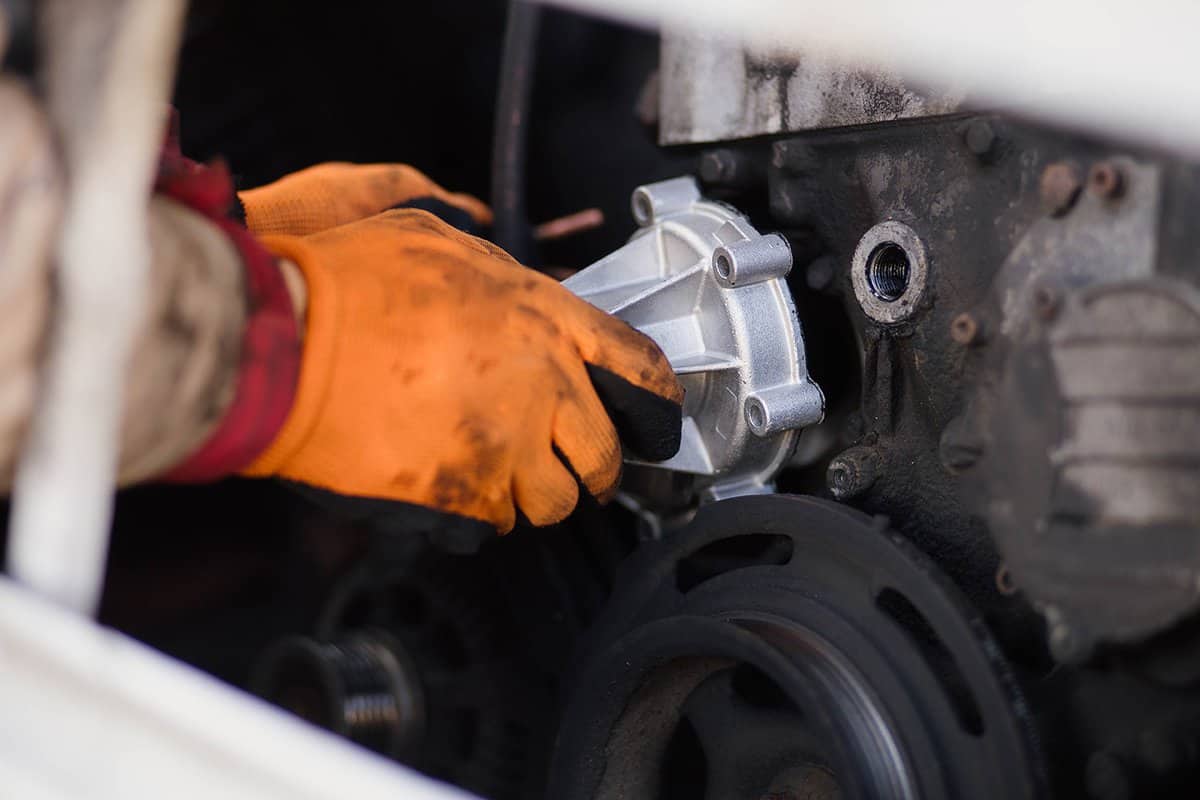
Locate the water pump
Depending on the type of car you have, you may have to locate where the water pump is. Typically, you can find them in either of these two places: underneath the timing belt or the side of the engine.
Loosen the bolts
The water pump is held in place by bolts (usually four). You’ll need to loosen them to be able to remove the pump. Use a socket wrench to loosen the bolts. It's recommended that you loosen the bolts on the pulley first. Removing the fan belt first will make it difficult for you to loosen the bolts because the pulley will spin. The fan belt keeps the pulley from spinning.
Remove the fan belt
Once you have loosened the bolts, you may now remove the fan belt.
Prepare a drain pan
Place a drain pan underneath to catch any coolant that comes out of the water pump.
Remove the water pump
Once you have completely drained all the coolant, remove the water pump by gently prying it out until it comes off.
Apply gasket sealer on the replacement pump
Before you put in the new water pump, make sure you apply gasket sealer on its contact surface before putting the gasket. Let it sit for 15 minutes. The gasket sealer ensures an airtight seal to prevent coolant from leaking out by maximizing the effectiveness of the water pump gasket.
Check out this water pump gasket sealant on Amazon.
Scrape off the old gasket from the engine
After you've removed the old water pump, you'll most likely see some old gasket leftovers on your engine. Use a scraper to get rid of any residue as this might affect adhesion.
Install the new water pump
Once you have made sure that the surface is clean, you may now put in the replacement water pump. Simply slide the water pump into place and make sure it is properly seated and tighten down the bolts. Make sure you don't overtighten them.
Reinstall the pulley and fan belt
Once you have firmly secured the water pump, you may now put the pulley and fan belt back on. Tighten the pulley's bolts and reattach the fan belt.
Refill the engine with coolant
Remember that you've drained the coolant early on to perform this procedure! Put the recommended amount of coolant. Start the engine for a few minutes and let the coolant circulate through the engine.
Cost of Replacing a Water Pump
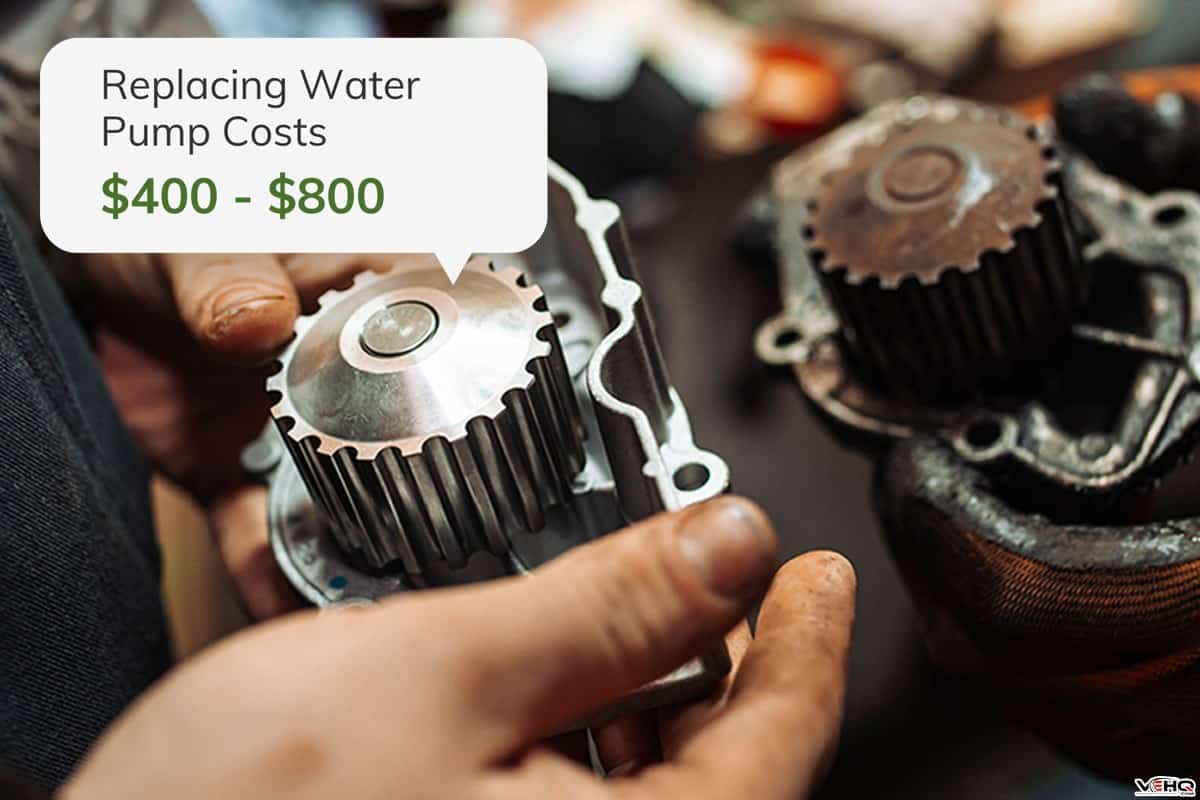
On average, local auto repair shops may offer to replace your car's water pump for between $400 and $800. The price will likely include both the labor cost and the parts replacement cost. However, miscellaneous fees such as taxes and diagnostic fees may be excluded. In addition, the gravity of the problem may cause a shop to charge more.
To understand how auto repairs are priced, first understand that the degree of difficulty is a factor. More specifically, the amount of labor required to complete the repair, the amount of materials used, and the degree of complexity of the repair all affect the cost of a repair.
Is It Safe To Drive My Car Even If The Water Pump is Broken?
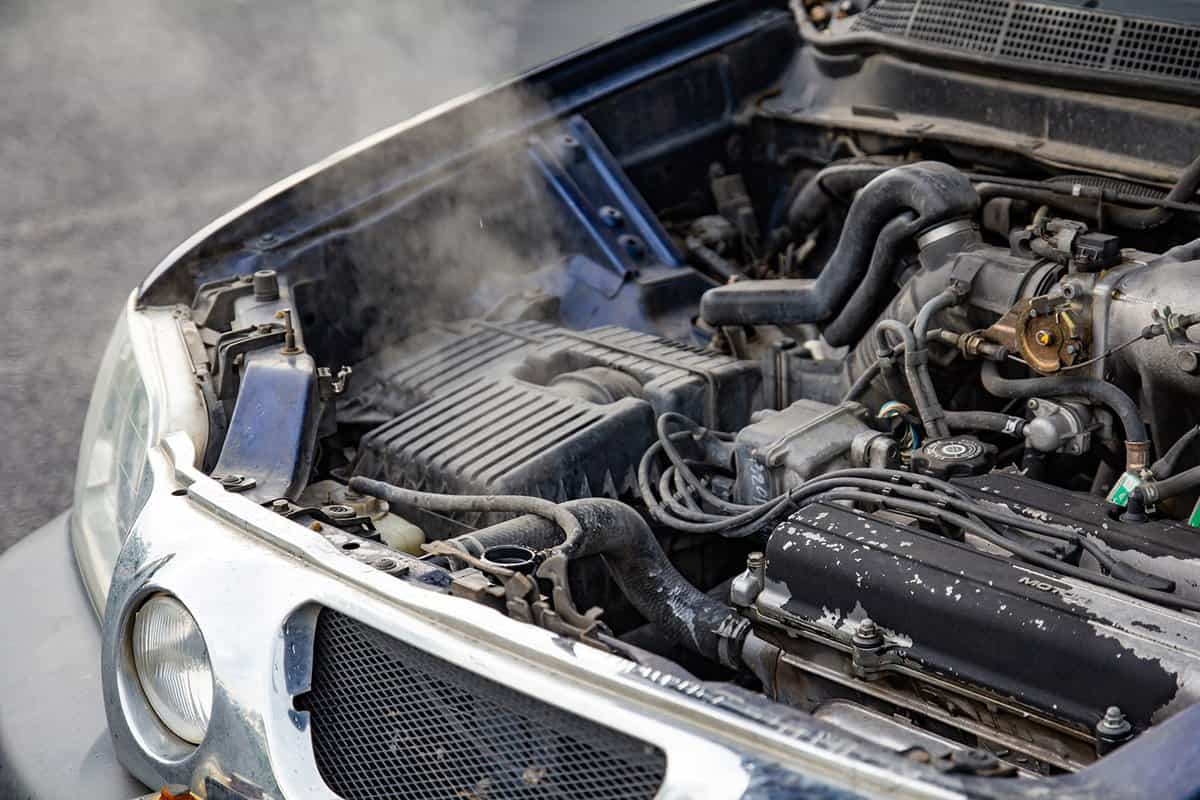
If the water pump on a car is broken, it won’t be able to provide adequate levels of coolant for the entire cooling system. As mentioned earlier, the water pump is something that is essential for the proper function of the engine.
When the water pump isn’t working, there’s nothing in the cooling system that can dissipate heat. When this happens, it will certainly destroy the engine.
You may be able to drive your vehicle for a certain period of time, but the vehicle will eventually suffer severe damage if the water pump is not replaced. In other words, driving a car with a broken water pump is a ticking time bomb.
What is the Average Lifespan of a Water Pump?
With proper car care and maintenance, water pumps can last up to 90,000 miles. However, there are a lot of variables that come into play when it comes to determining how long a car’s water pump can last.
Remember that the water pump is located on the engine side and it is constantly exposed to high temperatures. Your driving habits also play a role in the longevity of a water pump.
If you always feel the need for speed and blowing a head gasket is not a concern to you, then it will eventually take its toll on the water pump gasket as well. Extremely high temperatures will cause the engine to overheat and that's a red flag for gaskets.
In addition, car owners who habitually neglect routine maintenance and use the wrong coolant will cause the buildup of contaminants that can adversely affect the water pump’s lifespan.
In Closing
We have given you an idea of how long it takes to replace a water pump. We have also given you our best tips on how to replace a car water pump yourself. The best thing you can do for yourself is learning to fix your own car. If you are not mechanically inclined, then this could be a challenge. However, if you have a decent set of tools and some spare time, then fixing your own car is not that hard.
You might also like:

